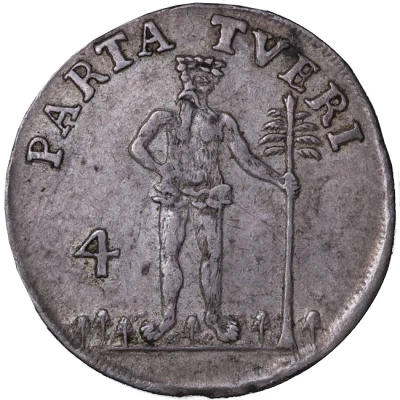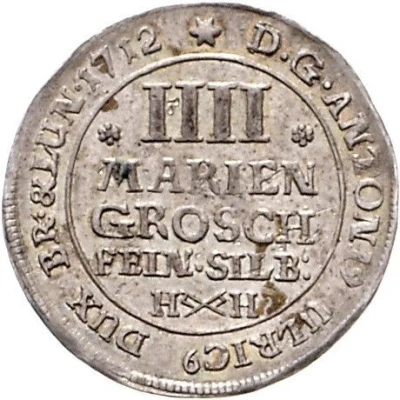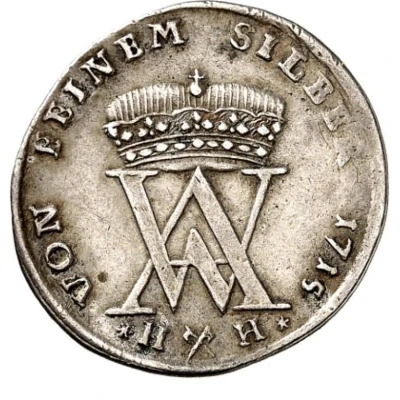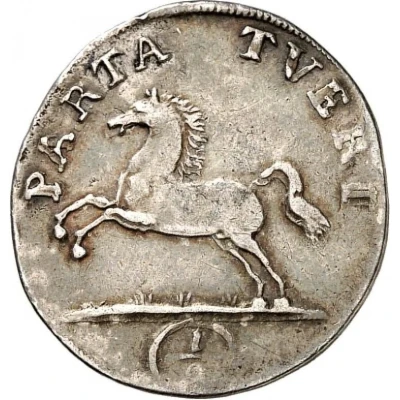


4 Mariengroschen - August William
| Silver | 2 g | 23 mm |
| Issuer | Principality of Brunswick-Wolfenbüttel (German States) |
|---|---|
| Prince | Augustus William (August Wilhelm) (1714-1731) |
| Type | Standard circulation coin |
| Years | 1714-1732 |
| Value | 4 Mariengroschen (⅑) |
| Currency | Thaler (1499-1814) |
| Composition | Silver |
| Weight | 2 g |
| Diameter | 23 mm |
| Shape | Round |
| Demonetized | Yes |
| Updated | 2024-10-05 |
| Numista | N#161167 |
|---|---|
| Rarity index | 97% |
Reverse
Wildman holding tree in left hand, 4 to left.
Script: Latin
Lettering:
PARTA TVERI
4
Interesting fact
One interesting fact about the 4 Mariengroschen coin from the Principality of Brunswick-Wolfenbüttel is that it was minted during a time of great economic and political change in Europe. The coin was issued during the reign of August William, who was the Duke of Brunswick-Wolfenbüttel from 1714 to 1732. During this period, the Holy Roman Empire was dissolved, and many German states, including Brunswick-Wolfenbüttel, began to issue their own coins. The 4 Mariengroschen coin was one of the first coins minted by Brunswick-Wolfenbüttel, and it was used widely in trade and commerce throughout the region. Despite its small denomination, the coin was made of silver, which gave it a high value and made it a popular choice for merchants and traders. Today, the 4 Mariengroschen coin is a rare and valuable collector's item, highly sought after by numismatists and historians interested in the economic and political history of Europe during this time period.



